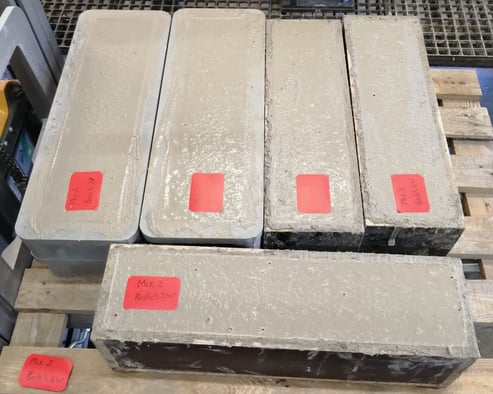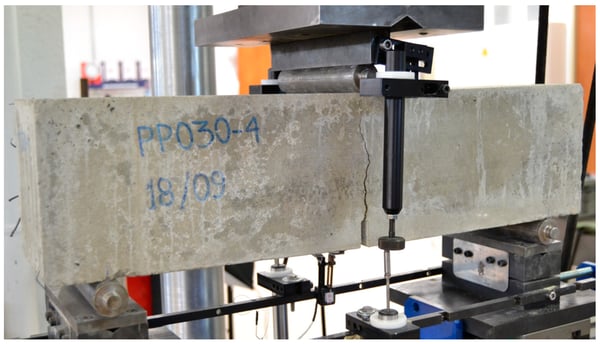BEAM TESTING TO VERIFY PERFORMANCE OF STEEL FIBRES IN CONCRETE
Published on 30 September 2021
.jpg?width=4032&name=20180105_AR005(1).jpg) Beam testing in progress
Beam testing in progress
There are numerous types of steel fibres sold around the world. When approaching the design of a Steel Fibre Reinforced Concrete (SFRC) slab, it is important to understand the individual characteristics of a particular fibre. Not all fibres perform in the same way at the same dosage. Fibre types can be differentiated by means of testing and their respective results.
Xavier Delattre, Twintec Australia’s Engineering Manager, looks at beam testing and the results achieved to enable a robust design.
The performance of steel fibres in concrete is expressed by the “fr” numbers. These numbers are measured using a test called “EN14651 Test method for metallic fibered concrete - Measuring the flexural tensile strength (limit of proportionality (LOP), residual)”.
What is the process for testing to define the fr numbers?
The test involves casting a minimum of 12 beams per test of fibre concrete. The dosage of fibres is recorded, and some test cubes or cylinders are prepared with plain concrete to allow for determination of the compressive strength of the test concrete at 28 days.

How are the results calculated?
Once all the beams have been tested in flexure as per EN14651, an average of the results for all the beams is calculated, to provide the fr1, fr2, fr3 and fr4 numbers.
The compressive strength of the test concrete is recorded at 28 days, and the fr number results can be published, with reference to the dosage of fibres and the compressive strength of the test concrete, to provide a full picture. In other words, the fr numbers alone are irrelevant, as they must be related to a dosage of fibres AND the compressive strength of the test concrete. For example, fibre XX had an fr1 number of 3.6 at a dosage of 30kg in a 40MPa concrete.
How many beams need to be tested?
For fr numbers to meet the requirements of EN14651, they should be derived from the average of a minimum of 12 beams, using ALL the beams tested. So, if 3 beams only are tested, the fr number values are not acceptable, because the sample group is too small.
More than 12 beams can be tested, then values to be excluded are outliers (to be identified by the Grubb test according to ISO 5725-2: 1994 for a probability of 5%).
Can the average beams from different batches of concrete be used?
No. The test must be performed using a single batch of concrete, otherwise variations would creep into the results from using different concrete batches. A 40MPa concrete mix can have different flexural tensile strengths, depending on the aggregate type, cement blend and many other factors.

Summary
- Ask for fr numbers for a fibre, check the dosage of fibres and the lab test results showing the compressive strength of the concrete used in the test.
- Check that the compressive strength of the concrete test mix matches the compressive strength of the concrete to be used. It is also worth noting that the concrete has just as much effect on the fr numbers as the fibre alone.
- Ensure fibre fr numbers are derived from a minimum of 12 beams, all cast using the same batch of concrete.
For general international business enquiries, email our international business team at r.waugh@twintecgroup.com
Topics: SFRC, steel fibres, beam testing
Comments
If you liked this article please share it or add a comment below